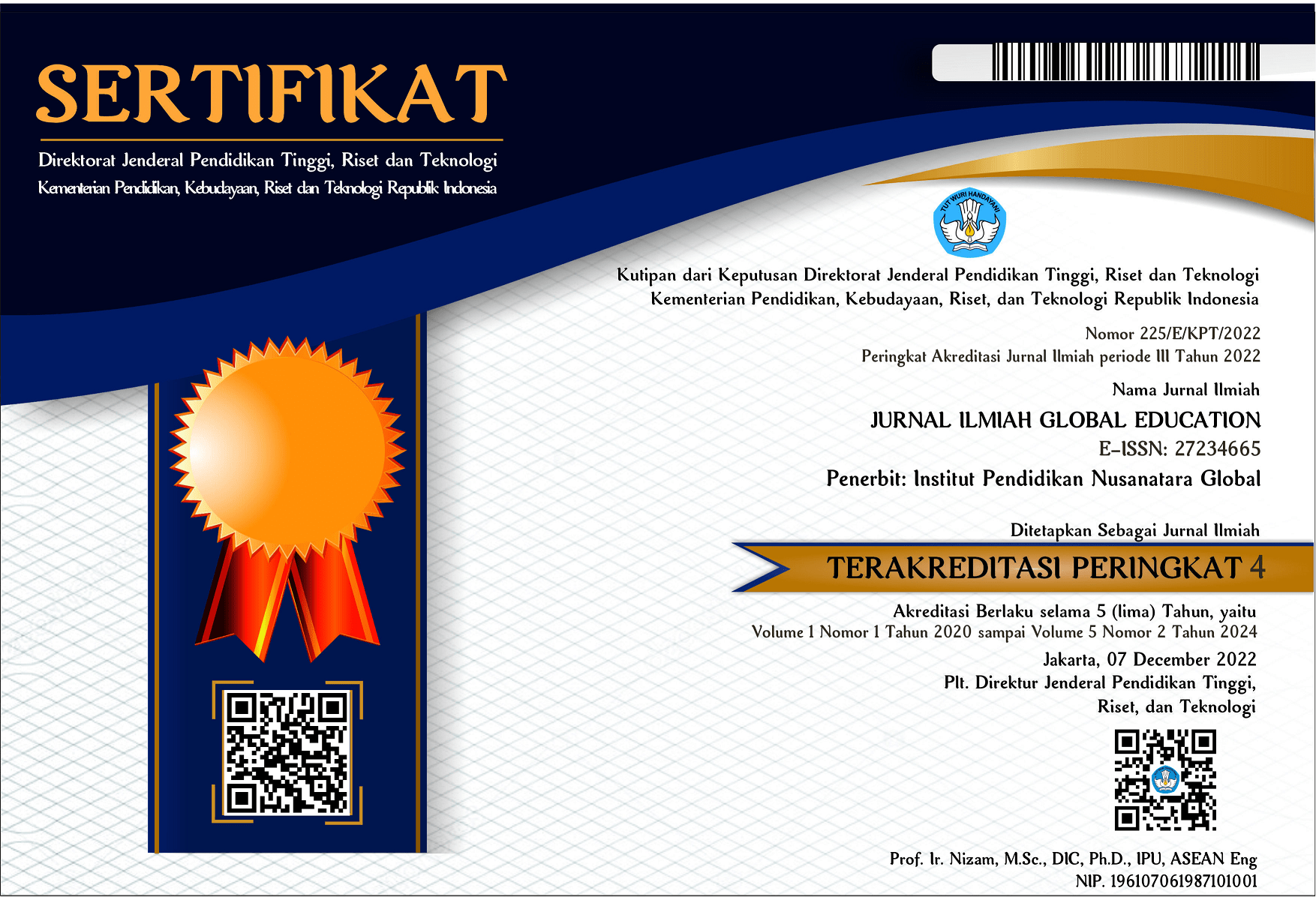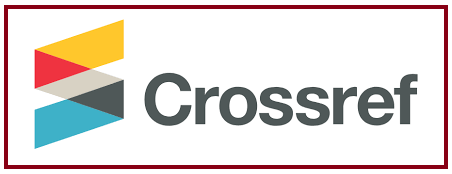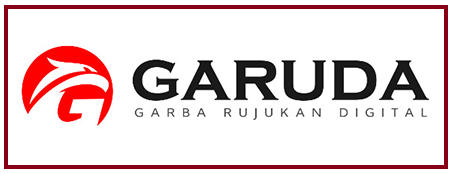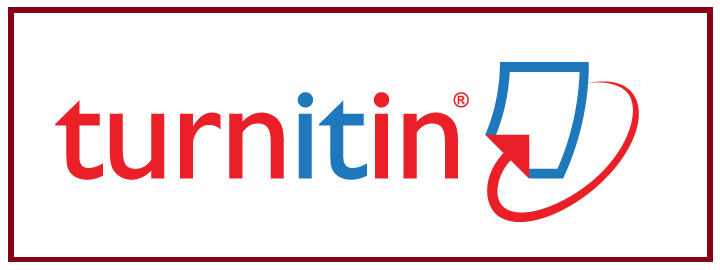PENGARUH KARAKTERISTIK AKUN SOCIAL MEDIA INFLUENCER TERHADAP NIAT UNTUK MENGIKUTI AKUN DAN SARAN PADA MEDIA SOSIAL TIKTOK
DOI:
https://doi.org/10.55681/jige.v4i3.1236Keywords:
Social Media Influencer, Influencer Marketing , Humor, OriginalityAbstract
Internet users are increasing every year which makes the use of social media also increase. The use of social media by consumers is increasing and one of the reasons is to seek information as a basis for decision making, so that someone who can make an impact appears, namely social media influencer (SMI). Information provided by social media influencers currently has a high level of trust and data shows that 62% of consumers in Indonesia make purchases based on advice given by influencers. One of the social media influencers who has the highest followers on several social media and has influence on his followers in the field of fashion and beauty, namely Tasya Farasya. However, in the midst of its popularity, some followers complained about declining account publications. This study aims to determine whether there is a positive influence related to the account publication features (originality, quality, quantity, humor) on followers' intentions to continue following account publications and advice. A total of 385 respondents who were followers of the tiktok account were used. Quantitative methods are used with analysis structural equation modelling (SEM). SmartPLS 3.0 software was used for data analysis. The results of this study indicate that the publication of humor-based content is an important factor in retaining followers. and the value of uniqueness is also considered to increase influence capacity and drive the effectiveness of influencer marketing campaigns with brands.
Downloads
References
Alamsyah, A., & Putra, M. R. D. (2019). Measuring information dissemination mechanism on retweet network for marketing communication effort: Case study: Samsung galaxy S10 launch event. 2019 7th International Conference on Information and Communication Technology, ICoICT 2019. https://doi.org/10.1109/ICoICT.2019.8835380
Arif, I., Aslam, W., & Siddiqui, H. (2020). Influence of brand related user-generated content through Facebook on consumer behaviour: a stimulus-organism-response framework. International Journal of Electronic Business, 15(2), 109. https://doi.org/10.1504/IJEB.2020.106502
Audrezet, A., de Kerviler, G., & Guidry Moulard, J. (2020). Authenticity under threat: When social media influencers need to go beyond self-presentation. Journal of Business Research, 117(November 2017), 557–569. https://doi.org/10.1016/j.jbusres.2018.07.008
Barta, S., Belanche, D., Fernández, A., & Flavián, M. (2023). Influencer marketing on TikTok: The effectiveness of humor and followers’ hedonic experience. Journal of Retailing and Consumer Services, 70(July 2022). https://doi.org/10.1016/j.jretconser.2022.103149
Belanche, D., Casaló, L. V., Flavián, M., & Ibáñez-Sánchez, S. (2021). Building influencers’ credibility on Instagram: Effects on followers’ attitudes and behavioral responses toward the influencer. Journal of Retailing and Consumer Services, 61. https://doi.org/10.1016/j.jretconser.2021.102585
Bu, Y., Parkinson, J., & Thaichon, P. (2022). Influencer marketing: Homophily, customer value co-creation behaviour and purchase intention. Journal of Retailing and Consumer Services, 66, 102904. https://doi.org/10.1016/j.jretconser.2021.102904
Casaló, L. V., Flavián, C., & Ibáñez-Sánchez, S. (2017a). Antecedents of consumer intention to follow and recommend an Instagram account. Online Information Review, 41(7), 1046–1063. https://doi.org/10.1108/OIR-09-2016-0253
Casaló, L. V., Flavián, C., & Ibáñez-Sánchez, S. (2017b). Understanding Consumer Interaction on Instagram: The Role of Satisfaction, Hedonism, and Content Characteristics. Cyberpsychology, Behavior, and Social Networking, 20(6), 369–375. https://doi.org/10.1089/cyber.2016.0360
Casaló, L. V., Flavián, C., & Ibáñez-Sánchez, S. (2020). Influencers on Instagram: Antecedents and consequences of opinion leadership. Journal of Business Research, 117(October 2017), 510–519. https://doi.org/10.1016/j.jbusres.2018.07.005
Chiew, T. M., Mathies, C., & Patterson, P. (2019). The effect of humour usage on customer’s service experiences. Australian Journal of Management, 44(1), 109–127. https://doi.org/10.1177/0312896218775799
De Veirman, M., Hudders, L., & Nelson, M. R. (2019). What Is Influencer Marketing and How Does It Target Children? A Review and Direction for Future Research. Frontiers in Psychology, 10. https://doi.org/10.3389/fpsyg.2019.02685
Enke, N., & Borchers, N. S. (2019). Social Media Influencers in Strategic Communication: A Conceptual Framework for Strategic Social Media Influencer Communication. International Journal of Strategic Communication, 13(4), 261–277. https://doi.org/10.1080/1553118X.2019.1620234
Eroglu, S. A., Machleit, K. A., & Davis, L. M. (2001). Atmospheric qualities of online retailing. Journal of Business Research, 54(2), 177–184. https://doi.org/10.1016/S0148-2963(99)00087-9
Flodgren, G., O’Brien, M. A., Parmelli, E., & Grimshaw, J. M. (2019). Local opinion leaders: effects on professional practice and healthcare outcomes. Cochrane Database of Systematic Reviews, 2019(6). https://doi.org/10.1002/14651858.CD000125.pub5
Fonna, K. R. (2021). Menilik Tingkat Kepercayaan Masyarakat terhadap Influencer di Masa Pandemi. https://kumparan.com/keysha-raafasya/menilik-tingkat-kepercayaan-masyarakat-terhadap-influencer-di-masa-pandemi-1x3DWbUhHk8
Ghozali, I. (2021). Partial Least Squares : Konsep, Teknik dan Aplikasi Menggunakan Program SmartPLS 3.2.9 Untuk Penelitian Empiris (edisi keti). Badan Penerbit Undip.
Hair, J. F., Hult, G. T. M., Ringle, C. M., Sarstedt, M., Danks, N. P., & Ray, S. (2021). Partial Least Squares Structural Equation Modeling (PLS-SEM) Using R. In Practical Assessment, Research and Evaluation (Vol. 21, Issue 1).
Henseler, J., Ringle, C. M., & Sarstedt, M. (2015). A new criterion for assessing discriminant validity in variance-based structural equation modeling. Journal of the Academy of Marketing Science, 43(1), 115–135. https://doi.org/10.1007/s11747-014-0403-8
Irwandy, D., & Rachmawati, D. (2018). PENERAPAN ELABORATION LIKELIHOOD THEORY DALAM MEMPENGARUHI KONSUMEN PADA PEMILIHAN PRODUK TELEPON GENGGAM. WACANA, Jurnal Ilmiah Ilmu Komunikasi, 17(2), 201–206. https://doi.org/10.32509/wacana.v17i2.644
Johnstone, L., & Lindh, C. (2022). Sustainably sustaining (online) fashion consumption: Using influencers to promote sustainable (un)planned behaviour in Europe’s millennials. Journal of Retailing and Consumer Services, 64, 102775. https://doi.org/10.1016/j.jretconser.2021.102775
Jr., J. F. H., Black, W. C., Babin, B. J., & Anderson, R. E. (2019). Multivariate Data Analysis (EIGHTH EDI). Cengage Learning.
Kotler, P., Keller, K. L., & Chernev, A. (2022). MARKETING MANAGEMENT (Sixteenth). Pearson Education.
Littlejohn, S. W., & Foss, K. A. (2008). Theories of Human Communication (9th Editio). Thomson Higher Education.
Petty, R. E., Briñol, P., & Tormala, Z. L. (2002). Thought confidence as a determinant of persuasion: The self-validation hypothesis. Journal of Personality and Social Psychology, 82(5), 722–741. https://doi.org/10.1037/0022-3514.82.5.722
Phua, J., & Kim, J. (Jay). (2018). Starring in your own Snapchat advertisement: Influence of self-brand congruity, self-referencing and perceived humor on brand attitude and purchase intention of advertised brands. Telematics and Informatics, 35(5), 1524–1533. https://doi.org/10.1016/j.tele.2018.03.020
Prasetio, A., Rahman, D. A., Sary, F. P., Pasaribu, R. D., & Sutjipto, M. R. (2022). The role of Instagram social media marketing activities and brand equity towards airlines customer response. International Journal of Data and Network Science, 6(4), 1195–1200. https://doi.org/10.5267/j.ijdns.2022.6.014
Purwandari, B., Ramadhan, A., Phusavat, K., Hidayanto, A. N., Husniyyah, A. F., Faozi, F. H., Wijaya, N. H., & Saputra, R. H. (2022). The Effect of Interaction between Followers and Influencers on Intention to Follow Travel Recommendations from Influencers in Indonesia Based on Follower-Influencer Experience and Emotional Dimension. Information, 13(8), 384. https://doi.org/10.3390/info13080384
Ramadhani, K. P., & Martini, E. (2021). The Role of Instagram Social Media Brand Page Experience on Consumer Engagement of Indihome Brand Loyalty Customer. Asian Journal of Research in Business and Management, 3(1), 51–61.
Sokolova, K., & Kefi, H. (2020). Instagram and YouTube bloggers promote it, why should I buy? How credibility and parasocial interaction influence purchase intentions. Journal of Retailing and Consumer Services, 53(September 2018), 101742. https://doi.org/10.1016/j.jretconser.2019.01.011
Taslaud, G. (2023). Influencer Marketing in Indonesia in 2023 – The Complete Guide. INSG.CO. https://www.insg.co/en/influencer-marketing-indonesia/
Zahay, D., Roberts, M. Lou, Parker, J., Barker, D. I., & Barker, M. S. (2022). Social Media Marketing: A Strategic Approach (Third Edit). Cengage Learning.
Downloads
Published
How to Cite
Issue
Section
License
Copyright (c) 2023 JURNAL ILMIAH GLOBAL EDUCATION

This work is licensed under a Creative Commons Attribution-ShareAlike 4.0 International License.













